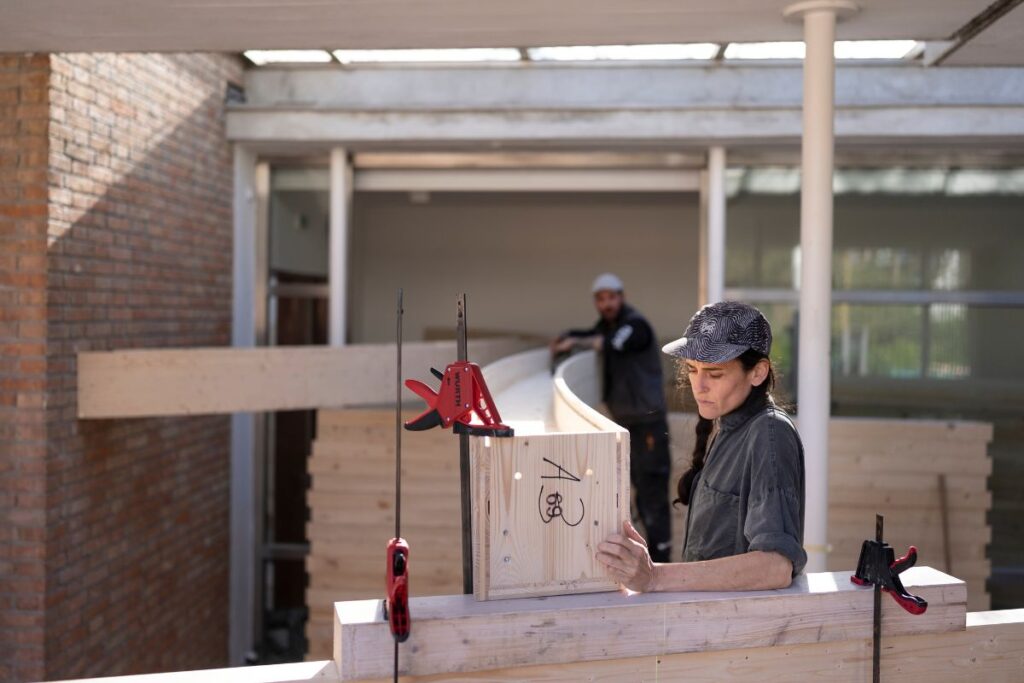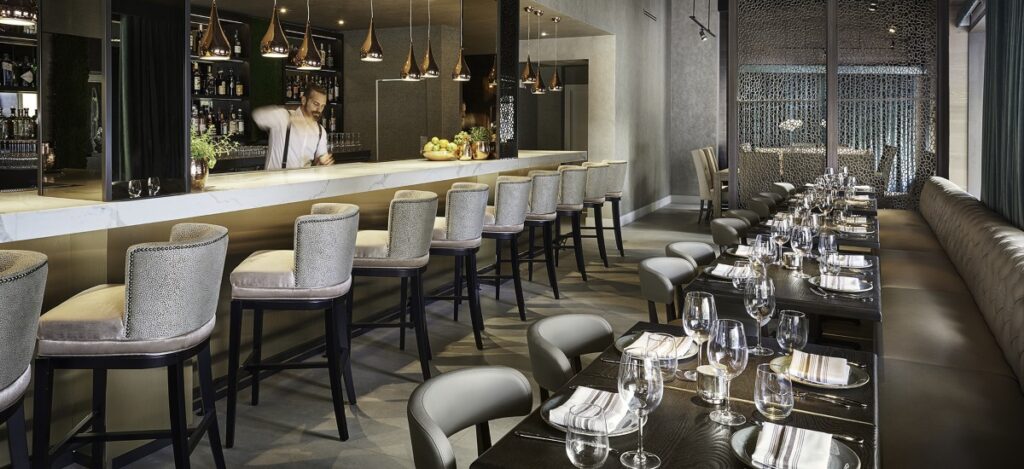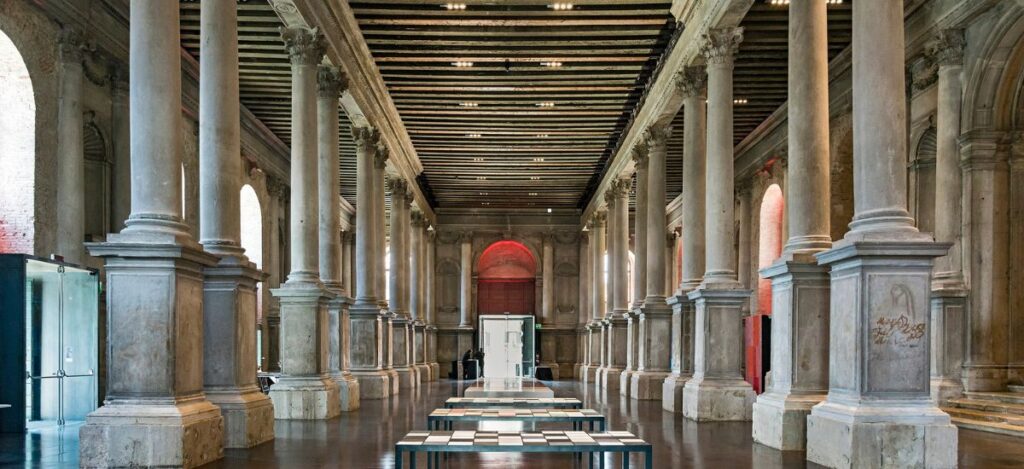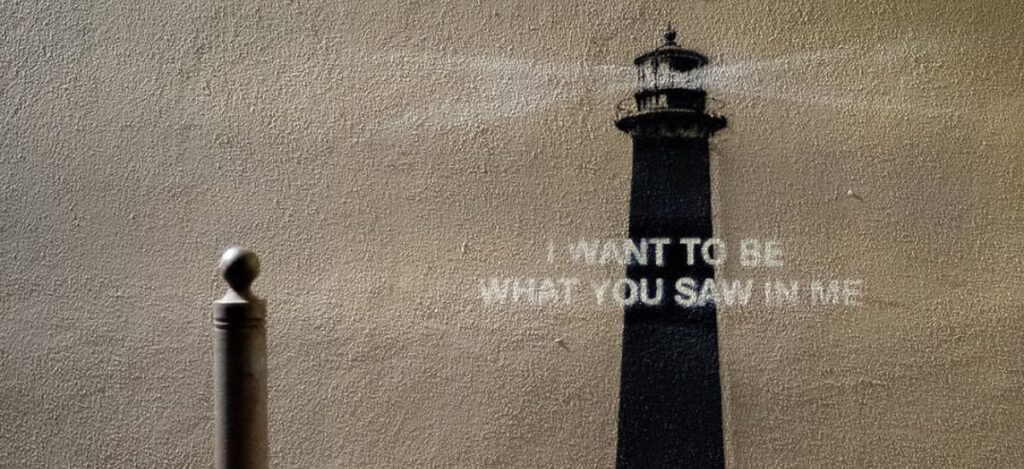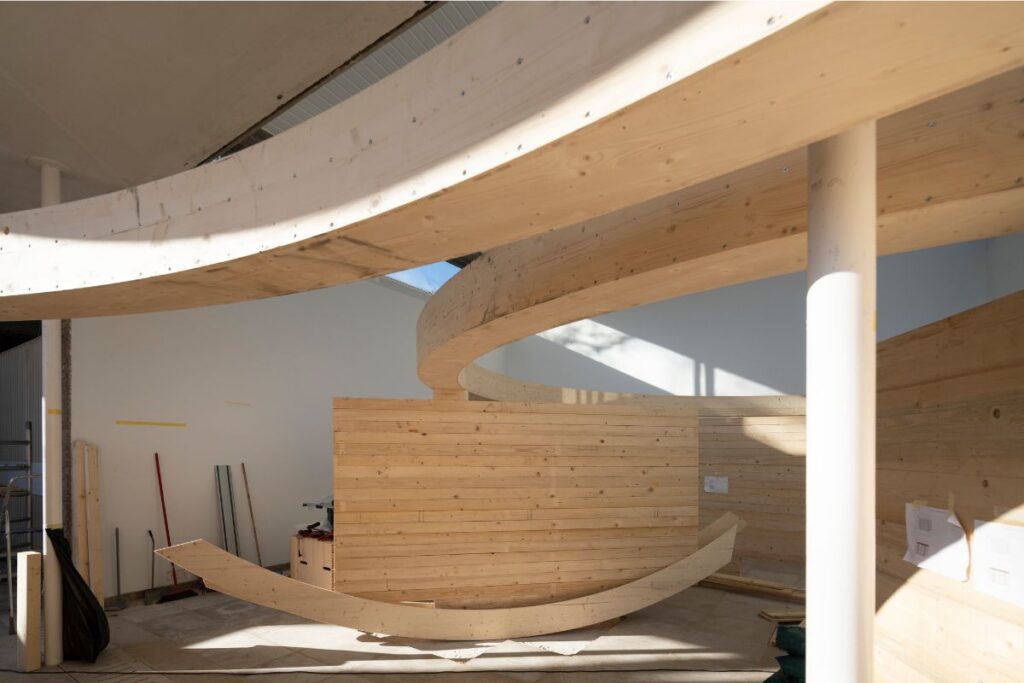Inspired by Sachs’ respectful and resourceful design philosophy, the Swiss Pavilion becomes a space of sensory and experiential architecture. Elements of her radial floor plan are recreated in sustainable materials, shifting from concrete to wood, and lighting becomes an acoustic medium—integrating past and present through sound.
A site-specific sound installation offers visitors a sensory journey, amplifying Sachs’ ethos of responsive architecture—where the environment actively shapes the outcome. The result is a resounding architectural form that prompts visitors to reflect on their surroundings and the nature of collective memory.
The curators explain: “We want to create a space that stimulates visitors’ imagination, leaving traces of our process without providing definitive answers. It is essential to reintegrate forgotten voices into the broader discourse.”
What Does It Mean to Experience Architecture as Sound?
At the heart of the pavilion, field recordings capture everyday interactions, conversations, landscapes, and even construction processes. Sound transforms architecture into an immersive narrative, creating a space that feels alive—blurring the boundaries between observer and participant.
“This auditory experience reveals a vibrant dimension of architecture and landscape, one that is felt and lived rather than solely observed.”
Meet the Collective: Who Are the Curators?
The curatorial team, operating under the name Annexe, consists of Elena Chiavi, Kathrin Füglister, Amy Perkins, and Myriam Uzor, alongside embedded artist Axelle Stiefel.
Their approach combines architecture, feminist practices, and performance, emphasizing collaboration and inclusivity. Annexe’s projects actively engage historical narratives, allowing contemporary dialogues to flourish.


